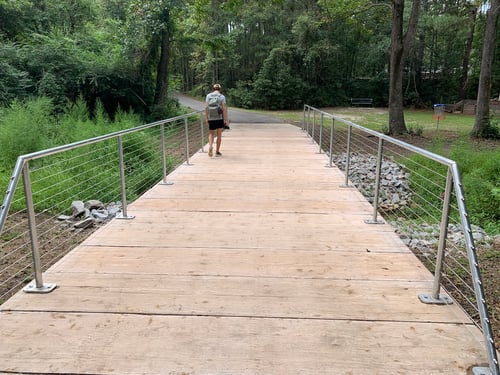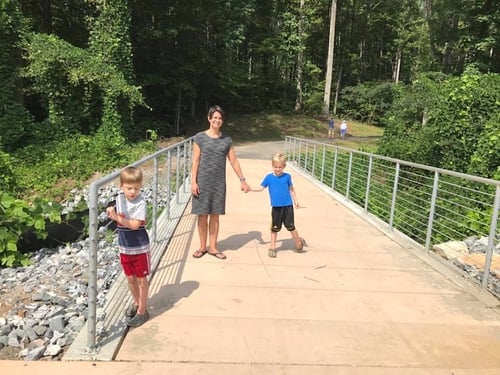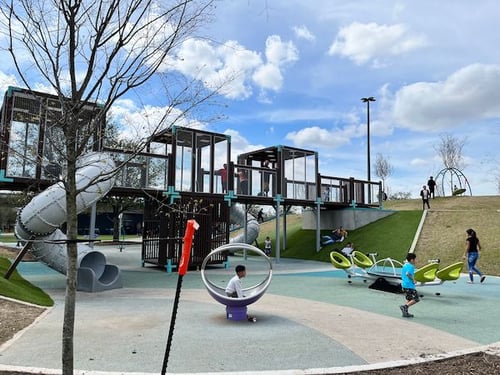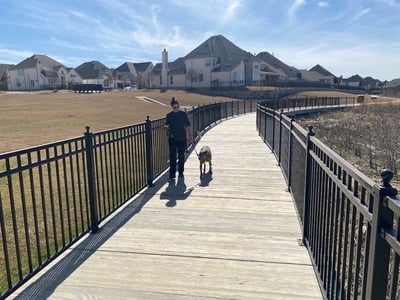Cities cannot thrive without public parks, which provide opportunities for fitness, relaxation, and community building. Parks offer children a place to play and adults a place to stay active, incorporating green spaces, playgrounds, multi-use trails, and open areas for sports and recreation that allow city residents to enjoy their natural surroundings.
Why Parks Are Important in City Planning

If you are involved in urban design and planning—as a public official, landscape architect, or civil engineer—you know the importance of having green space in a city. When city parks are successful, they offer a clear return on investment, including:
-
Promoting public health
-
Boosting tourism and property value
-
Rejuvenating local economies
-
Creating more energy-efficient spaces
- Fostering community resilience to effects of climate change
-
Connecting neighbors to each other
-
Exposing residents to nature
Unfortunately, not every neighborhood has safe, green spaces for residents to enjoy. The Trust for Public Land, a nonprofit organization that works to conserve land for parks, gardens and other natural areas, reports that one-hundred million people in America don't have a park within a 10-minute walk of home. Out of this 100 million people, 28 million are kids. In neighborhoods that lack parks, children either play in streets and empty lots or stay inside and engage in more sedentary activities, increasing their risk for health problems such as obesity and diabetes.

How to Evaluate City Parks
The Trust for Public Land developed ParkScore as a system to analyze a city’s current access to parks and green space. ParkScore evaluates factors including access, acreage, investment, amenities, and equity.
- Access: Portion of residents within a 10 minute walk of the park
- Acreage: Median park size and percent of area dedicated to parks
- Investment: Park spending per resident
- Amenities: Six popular features that appeal to a diverse cross-section of users
- Equity: Distribution of parks and park acres according to race and income
Cities are scored on each category. Of the 100 largest US cities, Washington, DC has the highest total rating and Irving, TX has the lowest rating.
The Trust for Public Land also outlines these "Seven Habits of Highly Effective Park Systems" written by Center for City Park Excellence director Peter Harnik:
- A clear expression of purpose
- An ongoing planning and community involvement process
- Sufficient assets in land, staffing, and equipment to meet the system’s goals
- Equitable access
- User satisfaction
- Safety from crime and physical hazards
- Benefits for the city beyond the boundaries of the parks
Click here to read the 34-page report by the Center for City Park Excellence.
How can you use this information to enhance the green spaces in your city?
 Award winning James Driver Inclusive Park in Houston, Texas.
Award winning James Driver Inclusive Park in Houston, Texas.
5 Tips for Improving Your City Parks
1. Use ParkScore and the seven factors of excellence as metrics.
Make it a priority to build sustainable and thriving neighborhood parks in your city. Examine your ParkScore and compare your city with others around the country. Learn from best practices and case studies, then set your own city planning goals.
2. Survey stakeholders to identify the needs of your community.
Ask what people in your city - both children and adults - want in a neighborhood park. Do kids want a wide field for soccer, football and Frisbee? Would adults like long running and walking paths that are safe to use in all seasons? Consider the feedback received and evaluate how these desires can be incorporated into park design. Determine what construction materials and other resources will be needed to meet these goals.
3. Locate underserved areas to determine where neighborhood parks are most needed.
Identify which areas in your city aren't within a 10-minute walk from a park. Analyze how strategic city planning could help address this issue. Consider factors like population density, demographics, and accessibility when deciding on park locations.
4. Explore creative ideas to use your city’s available space.
Innovative urban design can be used to create more green spaces even in highly developed cities. Consider vacant factories, shipyards, empty lots, rail depots and other spaces not in use to see if they could be converted into city parks. This can help create new green spaces while also revitalizing underutilized areas of the city.

5. Invest in long-lasting, durable and cost-effective construction materials.
Maintenance costs add up over time, so it’s important to build parks with a long-term strategic plan in mind. What construction materials will be a smart investment over the years? Which materials will stand the test of time and still work well decades from now?
Elevated greenways, multi use trails, pedestrian bridges and other boardwalks built with PermaTrak’s precast concrete require no maintenance and are easy to install, durable, and design-flexible, making them a perfect fit for city parks.


